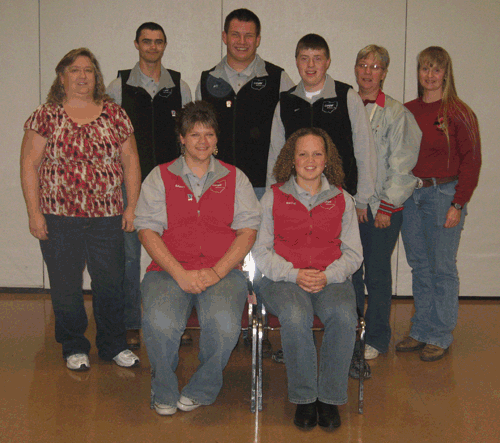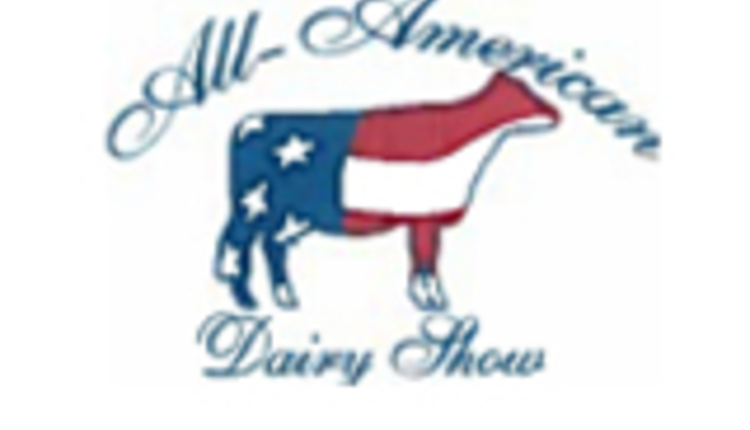The North American 4-H Dairy Quiz Bowl contest was held on Saturday, November 6th in Louisville, Ky. Twenty teams competed in the national double-elimination contest which celebrated its 31st year. High school and college aged youth (still 4-H members) compete by answering questions on all things dairy, including reproduction, genetics, feeding, dairy products and animal health.
Four team members constitute a state team during competition, but an alternate can also compete in matches, so teams can include five members. And, in one case this year, the team from Florida was a three-person team.
While I have witnessed dozens of breed dairy bowl contests, the national 4-H contest has a different format. A 50-question written test is taken on Friday evening, with scores used to seed the teams to determine which states face each other the next day. However, test scores carry over into the matches (with scores unknown to team members).
The next day is the head-to-head competition. Each team is asked five questions where members confer with each other before answering. After both teams have answered those (same) questions, the buzzer or toss-up round begins. Twenty short-answer questions are read, and, when a contestant knows the correct answer, they signal their device (buzzer) and answer the question. Both teams need to be quick on the buzzer to answer before the other team. If three different team members correctly answer a question, the team can earn a bonus where just that team can earn extra bonus points. Each match takes about 30 minutes.
At the conclusion of the toss-up round, scores are read: the score of the written test (from a predetermined section of the exam for this particular round), the team questions, the toss-up questions, and the bonus questions. Having to use fast math to calculate the winner, the audience and competing teams do not know how close the contest was until these scores are read aloud and only announced at the end of the match.
New York had defeated Ohio by five points to force Ohio to the consolation bracket, so Ohio had to face New York two more times to win victory. Ohio claimed the national title with team members: Eileen Gress, Rachel Townsley, Sam Weeman, Billy Grammar and Brandon Meier. Ohio 4-H was coached by Lorraine Townsley and Lisa Gress. The team had the chance to compete last year at the national contest but passed on the opportunity in hopes of earning the right to compete at this year's national contest when they felt would be more mature and would have a better chance of doing well. Coach Gress commented, "I knew this team would win the contest it they waited a year. They worked really hard and are very deserving. I am speechless after this win."

National 4-H Champion Dairy Bowl Team from Ohio:
Lorraine Townsley(coach), Brandon Meier, Billy Grammar, Sam Weeman, Lisa Gress and Julie Martig (coaches). Seated: Eileen Gress, Rachel Townsley
Four team members constitute a state team during competition, but an alternate can also compete in matches, so teams can include five members. And, in one case this year, the team from Florida was a three-person team.
While I have witnessed dozens of breed dairy bowl contests, the national 4-H contest has a different format. A 50-question written test is taken on Friday evening, with scores used to seed the teams to determine which states face each other the next day. However, test scores carry over into the matches (with scores unknown to team members).
The next day is the head-to-head competition. Each team is asked five questions where members confer with each other before answering. After both teams have answered those (same) questions, the buzzer or toss-up round begins. Twenty short-answer questions are read, and, when a contestant knows the correct answer, they signal their device (buzzer) and answer the question. Both teams need to be quick on the buzzer to answer before the other team. If three different team members correctly answer a question, the team can earn a bonus where just that team can earn extra bonus points. Each match takes about 30 minutes.
At the conclusion of the toss-up round, scores are read: the score of the written test (from a predetermined section of the exam for this particular round), the team questions, the toss-up questions, and the bonus questions. Having to use fast math to calculate the winner, the audience and competing teams do not know how close the contest was until these scores are read aloud and only announced at the end of the match.
New York had defeated Ohio by five points to force Ohio to the consolation bracket, so Ohio had to face New York two more times to win victory. Ohio claimed the national title with team members: Eileen Gress, Rachel Townsley, Sam Weeman, Billy Grammar and Brandon Meier. Ohio 4-H was coached by Lorraine Townsley and Lisa Gress. The team had the chance to compete last year at the national contest but passed on the opportunity in hopes of earning the right to compete at this year's national contest when they felt would be more mature and would have a better chance of doing well. Coach Gress commented, "I knew this team would win the contest it they waited a year. They worked really hard and are very deserving. I am speechless after this win."

Lorraine Townsley(coach), Brandon Meier, Billy Grammar, Sam Weeman, Lisa Gress and Julie Martig (coaches). Seated: Eileen Gress, Rachel Townsley
New York's 4-H Team members were Kassie Abrams, Magdalene Richmond, Emily Bonin and Eric Worden. They were coached by Matt Young and Debbie Grusenmeyer. Both Ohio and New York were all-state teams, representing several counties in their states. Some states choose to send their state contest's winning county team, while teams like Ohio and New York select the top individuals to compete at the national contest.
New Yorkers, Kassie Abrams and Emily Bonin placed first and second in the written test portion of the contest. Other top written test scorers were Maggie Buckmeier (Maryland), Marty Harris (Virginia), Grace Ott (Virginia), Caroline Warns (Virginia), Magdelene Richmond (New York), Joey Adams (Iowa), Eileen Gress (Ohio) and Austin Pluskot (Florida).
Rounding out the overall team results, Georgia was third, Iowa fourth, and honorable mention to Florida and Wisconsin.
After the contest, I had the chance to learn a little about the winning team members and their dairy background. Eileen Gress lives on her family's 85-cow registered Ayrshire farm and hopes for a career with the Ayrshire Breeders' Association in a marketing and communications role. Rachel's family milks 80 Holsteins and has her sights set on a career in engineering. Brandon is employed on a Holstein and Brown Swiss farm where they milk 130 cows. He is currently enlisted in the US Army 88 Mike (motor transport). After military service, he plans to attend college and study culinary arts and open a restaurant. Hailing form a 700-cow Registered Jersey Farm, Billy Grammar hopes for a position as an A.I. technician in the future.
The contest is sponsored by American Dairy Science Association Foundation, Down Home Jerseys, Farm Credit Services, North American Livestock Exposition, National Dairy Shrine, and Select Sires, Inc.
Congratulations to all teams competing and see a few of the teams in action.








